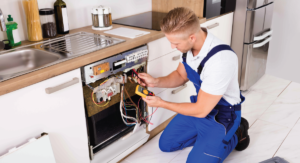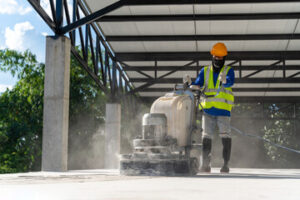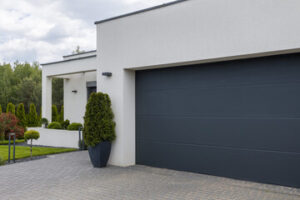Appliances are hard-working machines that are easy to take for granted. But when they stop working, they can be frustrating to deal with. If you are experiencing an issue with one of your appliances, you should consider calling a professional to repair it.
Choosing the right appliance repair service can save you time and money. Here are some tips to help you choose the best service. Contact Appliance Pro Repairs now!

The cost of appliance repair can vary widely. The type of appliance, the severity of the problem, and the location can all affect the price. For example, complex appliances like refrigerators and HVAC systems typically have higher repair costs. In addition, the availability of replacement parts can also impact the price.
Professional appliance technicians can quickly diagnose problems and provide solutions. They can also recommend routine maintenance services that can prevent future issues. These services can save you money in the long run by extending your appliances’ lifespan and improving performance.
When choosing a technician, it’s important to compare multiple quotes and look for companies that offer warranties and guarantees. You should also make sure that the company has the necessary licenses, bonds, and insurance. In addition, check for manufacturer certifications and read reviews on Google and HomeGuide. It’s also a good idea to ask about service charges and whether they include labor and materials.
Most appliance repair technicians charge by the hour, but you may also be charged a service fee of $50-$100 to cover travel expenses. These fees are not included in the total repair price and are usually charged only for emergency repairs. If you need to have your appliance fixed immediately, contact a repair service that offers 24-hour service.
Appliance repairs can be expensive, but if you’re careful, you can find a reputable technician at a reasonable price. In fact, if you have a warranty on your appliance, you might be able to get the repair done for free. If you don’t have a warranty, consider purchasing an extended warranty from a home improvement store. These warranties usually transfer to new homeowners and are often more affordable than a manufacturer warranty.
If your appliance doesn’t turn on, first try checking that it is plugged in. Then, you can check the breaker box to see if there’s any damage. Typically, a broken electrical cord is the culprit. Alternatively, you can hire an appliance repairman to fix it for you. These professionals have the tools and experience to fix most household appliances, from dishwashers to stoves.
Warranty
Choosing the right appliance repair company can help you save money and improve the performance of your appliances. Professional technicians are experienced in handling various electrical and mechanical issues, including the safe handling of hazardous materials. They also know how to identify and diagnose problems accurately, minimizing the chances of future repairs. You should also choose a service that offers preventive maintenance services, which can enhance energy efficiency and reduce utility bills.
When looking for an appliance repair company, consider the following factors:
Experience: Choose a company that has years of experience in the field. A long history demonstrates that the company is reputable and has a strong customer base. Moreover, it is likely that a company with extensive experience has dealt with many different appliance models and issues, so it can provide you with the best solution.
Customer service: Providing excellent customer service is an important factor in the success of any business. Look for companies that respond promptly to complaints and offer courteous service. It is also important to check the company’s reputation online by typing its name into a search engine.
Certification: Look for appliance repair companies with certified technicians, as this shows that they have the skills and knowledge to handle any appliance issue. This will ensure that your appliances are repaired safely and effectively.
Regulatory requirements: Before you start an appliance repair business, be sure to comply with the relevant regulations in your area. This may include registering with your local government authorities, obtaining a business license and purchasing liability insurance.
You should also decide what kind of business structure to adopt. A corporation is ideal for larger businesses and provides the highest level of liability protection. However, it requires more resources and a lot of paperwork. A limited liability company is an alternative that requires less paperwork and offers a lower cost than a corporation.
A successful appliance repair business depends on a wide range of factors, including marketing, customer service and equipment. Define your target audience carefully and devise a marketing plan that reaches this demographic. In addition to online advertising, you can also use offline marketing methods such as distributing business cards and establishing relationships with potential customers.
Reputation
A good appliance repair service can be a lifesaver, especially when your appliances are down. It is important to choose a company that has a strong reputation for excellent customer service and reliable repairs. You should also ask for referrals from friends and neighbors. If they’ve had a positive experience, they’ll be happy to share it with you. Some companies also offer a satisfaction guarantee or a money-back promise, which can be an added incentive.
You can find a number of different appliance repair services online, but it’s best to select one with a reputation for quality work. The website should have a user-friendly booking experience and allow you to enter the appliance brand, day and time of the appointment, and your location. The website will then connect you with a technician. Sears is a good option for homeowners who want to book an appliance repair service, as it has more than 2,500 technicians and is available in 47 states and Washington, D.C.
Another option is Frontdoor Pro, which offers budget prices and a money-back guarantee. The company’s technicians are experienced and carry common parts in their GPS-equipped trucks. The company also offers a wide range of appliance repair services, including refrigerators, washers and dryers, stoves, dishwashers, ice machines, and ovens. It is based in Brooklyn and Queens, and its technicians are bilingual.
When choosing an appliance repair service, check its reputation for first-time repair rates. According to a recent survey, the majority of appliance repair services fail to fix their customers’ appliances correctly the first time around. This is particularly true for independent repair shops, but even factory-authorized shops have a low first-time fix rate. However, if you’re in the market for a new appliance, it’s worth checking if the company has a satisfaction guarantee. This guarantee can ensure that you’re satisfied with the quality of their work and that they will resolve any issues that may arise. In addition to the money-back guarantee, some companies, such as Mr. Appliance and Aire Serv, also offer a “Neighborly Done Right Promise” that promises to work until the job meets your standards.
Experience
Appliances are essential for everyday life, from tackling laundry to preserving food. However, when they break down, it can throw off your whole routine. Thankfully, professional appliance repair services can help you get back on track quickly by resolving issues and performing routine maintenance. They use genuine replacement parts and follow strict safety guidelines to ensure your appliances remain safe and efficient.
Appliance repair technicians specialize in repairing and maintaining home appliances, like refrigerators, washers, dryers, ovens, and air conditioners. They work on-site at customer’s homes or in a repair shop. Some also offer installation services. Typical duties of an appliance repair technician include examining an appliance, diagnosing the problem, and performing repairs. They may also be responsible for providing rough estimates to customers on how much it will cost to repair a specific appliance.
Besides repairing broken appliances, appliance repair professionals can also help you choose the right one for your needs. They can recommend different types of appliances that will meet your needs, and they can also provide you with advice on how to maintain your appliances to extend their lifespan. In addition to these services, they can install and remove appliances for you.
Many appliance repair companies offer home warranties that cover appliance repair and replacement. However, it’s important to check with your insurance company before hiring a pro. Some companies only cover new appliances, so you’ll need to find a different appliance repair service for old ones.
The Appliance Repair industry is facing a variety of challenges and opportunities. Growth in existing home sales and consumer confidence will boost demand for appliance repair services, while rising interest rates and high appliance prices may encourage consumers to opt for repairs rather than purchase new ones.








